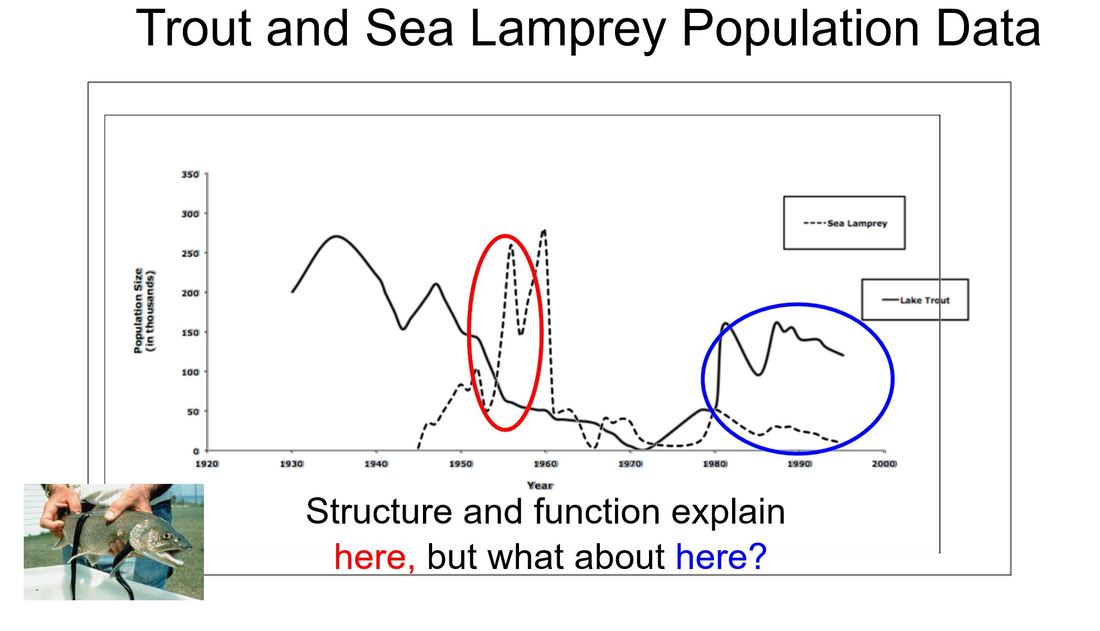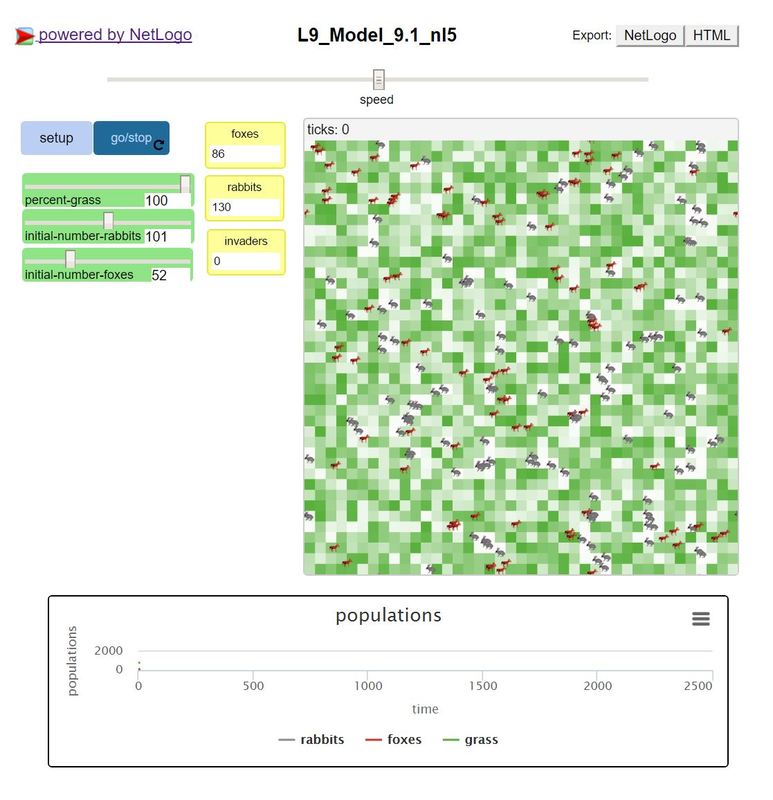Everyone in the sixth grade claimed that the invasive sea lamprey had an impact on the trout's population. Its advantageous structures (mouth, teeth, gills, swimming ability and total number of eggs) prove it to be a predator, but some of the data we found doesn't match up with that claim.
By 1980, the trout population was on the rise, and we would expect that the invasive sea lamprey's population would follow en suite. But it didn't...and we see a steady decline to where it almost disappears by the time 2000 rolls around. What other factors can be causing the trout's population to rebound while the lamprey's population to decline?
We did some research to learn of human impact to reduce the sea lamprey's success, like with the development of some barriers and chemicals to aid in a reduced population. But is is possible that another organism can be competing with the lamprey for either its food, or maybe another resource it needs, like water or space?
Our best bets at figuring this out are to use a computer model that shows population changes between three organisms. As these organisms compete for food and space, what happens? We'll be using a computer based model to help explain this!
By 1980, the trout population was on the rise, and we would expect that the invasive sea lamprey's population would follow en suite. But it didn't...and we see a steady decline to where it almost disappears by the time 2000 rolls around. What other factors can be causing the trout's population to rebound while the lamprey's population to decline?
We did some research to learn of human impact to reduce the sea lamprey's success, like with the development of some barriers and chemicals to aid in a reduced population. But is is possible that another organism can be competing with the lamprey for either its food, or maybe another resource it needs, like water or space?
Our best bets at figuring this out are to use a computer model that shows population changes between three organisms. As these organisms compete for food and space, what happens? We'll be using a computer based model to help explain this!


 RSS Feed
RSS Feed